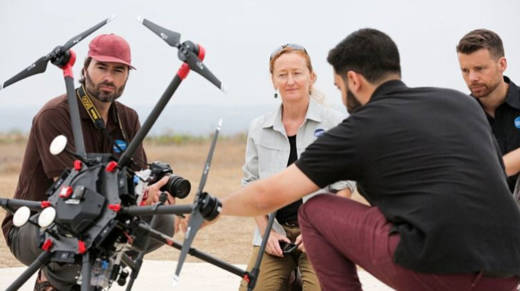Northrop Grumman helped develop the autonomous drone that's capable of operating in extreme cold.
"We built them a custom, leading-edge sensor fusion suite which takes a whole variety of different sensors and puts them all together and operates them simultaneously at an extremely high resolution so they can study sea ice at a very fine scale and how it changes really rapidly," said Charlie Welch, research coordinator at Northrop Grumman.
The device is a modified commercial drone that is packed full of high-tech sensor equipment. Those delicate scientific instruments are wrapped up in protective shielding that keeps the cold out and keeps the equipment warm enough to allow its batteries to work.
It gives scientists a tool they never had before as they study sea ice.
"It is like a multi-spectral sensor that gives us different light wavelengths, a thermal sensor that'll map out the heat gradients, a radar to help us map out the terrain in 3-D, all these things, all this data that can be collected simultaneously, at once. So we don't have to re-fly over the same area over and over again," said James Sheppard, a researcher for San Diego Zoo Global.
Putting all that information together helps researchers understand the habitat and how that affects the polar bears that live there.
The drone was tested last year in the Arctic by a team of Northrop Grumman engineers from Florida to see how the system performed in remote areas with extreme weather conditions.
The autonomous system is expected to provide a more detailed, finer-scale view of sea ice habitat, and it offers the potential to observe polar bears without disturbing the animals or posing a risk to humans.
Next month's expedition, dubbed Operation #PolarEye, will operate from the Churchill Northern Studies Centre, located along the Hudson Bay coastline in Churchill, Manitoba and a remote research facility on the Knife Delta.
During the mission the team will livestream video to the ground station so they can operate a developmental polar bear recognition algorithm, which they hope will notify scientists when a polar bear is spotted to allow for easier monitoring on the ice.
